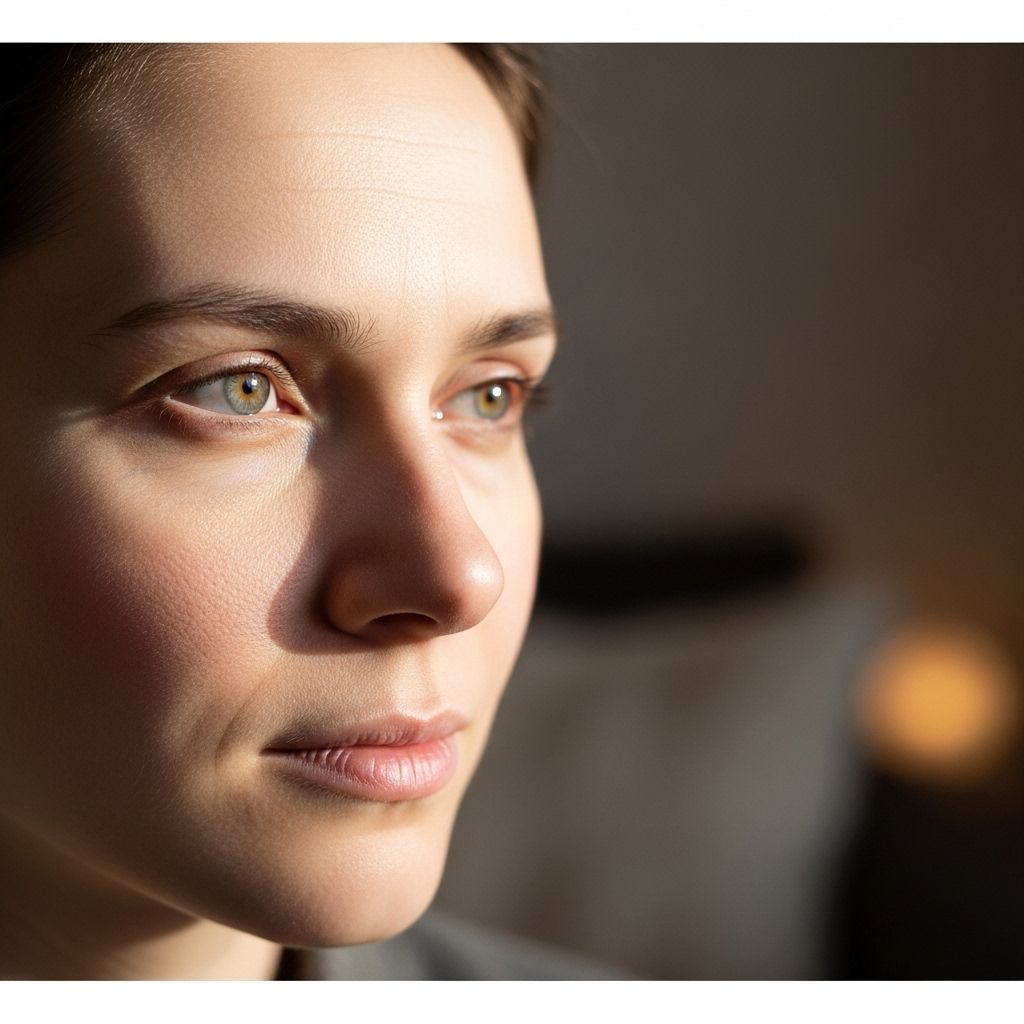SAD & Skin Pallor: Exploring Seasonal Affective Disorder’s Impact on Circulation
Brighten your winter complexion by boosting blood flow through easy everyday routines.

Introduction to Seasonal Affective Disorder (SAD)
Seasonal Affective Disorder (SAD) is a type of depression that typically occurs during the same time every year, often starting in the fall and continuing into the winter months. It is less commonly known as summer depression, where symptoms occur during the spring and summer. SAD is believed to be linked to the reduced sunlight during these seasons, which can affect a person’s mood and energy levels. Beyond mood changes, SAD can also have a significant impact on skin health and circulation.
Understanding Skin Pallor
Pallor, or skin paleness, is a condition where the skin appears lighter than usual. It can be caused by various factors, including emotional distress, reduced blood flow, or underlying medical conditions. Pallor is often temporary and resolves once the underlying cause is addressed.
Causes of Pallor
Pallor can result from several factors, including:
- Emotional Distress: Stress or anxiety can lead to a decrease in blood flow to the skin, causing paleness.
- Reduced Blood Flow: Conditions that affect circulation, such as hypovolemia or shock, can also cause pallor.
- Medical Conditions: Anemia, hypothyroidism, or severe dehydration can contribute to pallor.
Seasonal Affective Disorder’s Impact on Skin Health
SAD can manifest in various skin conditions due to changes in temperature, light exposure, and lifestyle. Some common skin issues associated with SAD include:
- Dry Skin and Flakiness: Low humidity and indoor heating during winter months can lead to dry, itchy skin.
- Eczema and Psoriasis Flare-Ups: Stress associated with SAD can exacerbate these conditions, leading to flare-ups.
- Reduced Collagen Production and Premature Aging: Lowered vitamin D levels and reduced sunlight exposure can affect collagen production.
- Hyperpigmentation: Hormonal changes and stress can contribute to hyperpigmentation.
- Dark Circles and Puffiness: Poor sleep patterns and nutritional deficiencies common in SAD can cause these issues.
Managing Skin Health During SAD
To mitigate the effects of SAD on skin, consider the following strategies:
- Moisturize and Protect: Use thick moisturizers to combat dryness, and protect your skin from harsh winter conditions.
- Stress Reduction: Manage stress through meditation, yoga, or therapy to reduce the occurrence of eczema and psoriasis flare-ups.
- Light Therapy: Utilize light therapy boxes to mimic natural sunlight, which can help improve mood and skin health.
- Healthy Diet: Focus on consuming foods rich in omega-3 fatty acids and antioxidants to support skin health.
SAD, Circulation, and Skin Pallor: The Connection
The relationship between SAD, circulation, and skin pallor is complex and multifaceted. Reduced sunlight exposure during winter can lead to a decrease in vitamin D levels, which can affect circulation and overall skin health. Moreover, stress and hormonal changes associated with SAD can cause blood vessels to constrict, reducing blood flow and potentially leading to pallor.
Improving Circulation During SAD
Improving circulation can help alleviate symptoms of pallor and other skin issues related to SAD:
- Exercise Regularly: Engage in aerobic exercises to enhance blood flow and circulation.
- Stay Hydrated: Drink plenty of water to maintain fluid balance and support circulation.
- Warm Showers: Take warm showers to help dilate blood vessels and improve circulation.
Managing Seasonal Affective Disorder
Managing SAD involves a combination of lifestyle changes, therapies, and sometimes medication. Some strategies include:
- Light Therapy: Exposure to bright light, especially in the morning, can help regulate the body’s circadian rhythms and improve mood.
- Psychotherapy: Cognitive-behavioral therapy can help individuals cope with SAD by addressing negative thought patterns and behaviors.
- Medication: In some cases, antidepressants may be prescribed to manage symptoms of SAD.
- Lifestyle Changes: Maintain a regular sleep schedule, stay active, and ensure a balanced diet to support overall well-being.
Frequently Asked Questions (FAQs)
Q: What is Seasonal Affective Disorder?
A: SAD is a type of depression that occurs during specific times of the year, typically during the winter months, due to reduced sunlight.
Q: How does SAD affect skin health?
A: SAD can lead to dry skin, eczema flare-ups, reduced collagen production, and other skin issues due to changes in temperature, light exposure, and stress.
Q: What is pallor, and how is it related to SAD?
A: Pallor, or skin paleness, can be exacerbated by SAD due to reduced circulation and stress. It is a temporary condition that often resolves once the underlying cause is addressed.
Q: How can I improve circulation during SAD?
A: Engage in regular exercise, stay hydrated, and use warm showers to help improve blood flow and reduce symptoms of pallor.
Q: What are some common treatments for SAD?
A: Common treatments include light therapy, psychotherapy, medication, and lifestyle changes to manage symptoms effectively.
Q: Can changing geographical locations help manage SAD?
A: For some individuals, moving closer to the equator may help by increasing sunlight exposure year-round. However, this is not a viable option for everyone, and most people find relief through other treatments.
Conclusion
SAD’s impact on skin health and circulation is significant, but with the right strategies, individuals can effectively manage these effects. By understanding the relationship between SAD, skin pallor, and circulation, and by implementing appropriate treatments and lifestyle changes, it is possible to maintain healthy, radiant skin throughout the year.
Table of Content
- Introduction to Seasonal Affective Disorder (SAD)
- Understanding Skin Pallor
- Seasonal Affective Disorder’s Impact on Skin Health
- SAD, Circulation, and Skin Pallor: The Connection
- Managing Seasonal Affective Disorder
- Frequently Asked Questions (FAQs)
- Conclusion
References
- https://www.clinikally.com/blogs/news/a-light-on-seasonal-affective-disorder-its-impact-on-your-skin
- https://mohs-md.com/seasonal-affective-disorder-and-your-skin-understanding-the-connection/
- https://www.mayoclinic.org/diseases-conditions/seasonal-affective-disorder/symptoms-causes/syc-20364651
- https://my.clevelandclinic.org/health/diseases/pallor
- https://www.healthline.com/health/paleness
- https://my.clevelandclinic.org/health/diseases/9293-seasonal-depression
- https://www.nimh.nih.gov/health/publications/seasonal-affective-disorder
- https://www.yourgreatskin.com/the-surprising-link-between-seasonal-affective-disorder-and-your-skin/
- https://www.psychiatry.org/patients-families/seasonal-affective-disorder
- https://www.mayoclinichealthsystem.org/hometown-health/speaking-of-health/seasonal-affective-disorder-more
Read full bio of Sneha Tete












